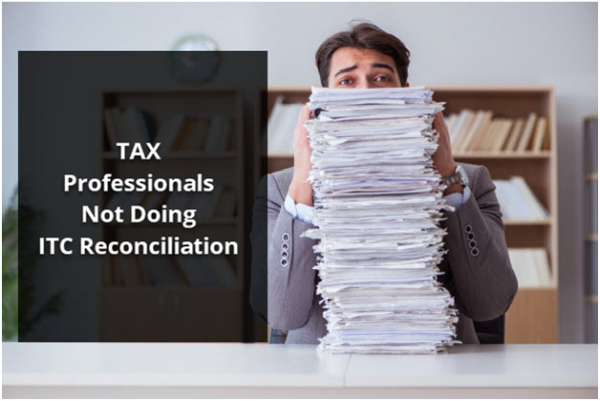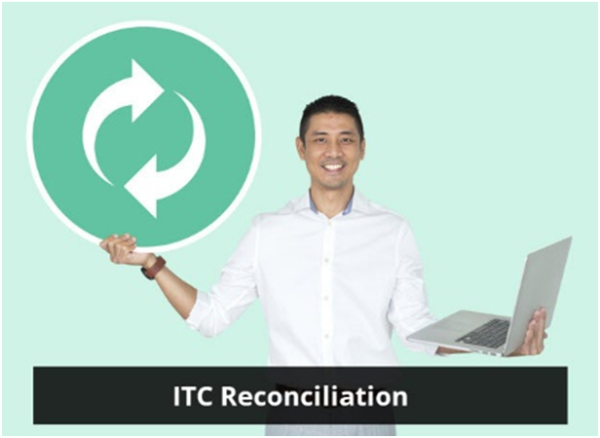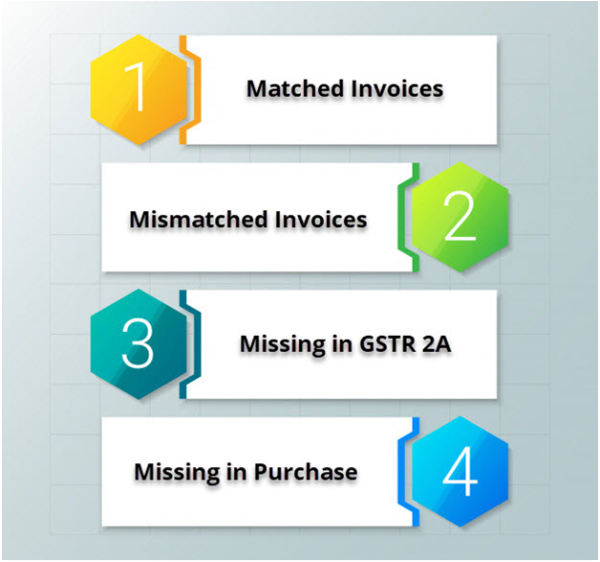Today, most of the tax professionals are not doing Input Tax Credit reconciliation for their clients. It is understandable that doing ITC reconciliation for all the clients is very time consuming and the fees received from the client may not be sufficient. Also, there is a lack of understanding of customer transactions and required manpower to do ITC reconciliation when there are other compliances that needs to be done.

However, non-reconciliation of ITC may impact your clients adversely. Non-reconciliation may lead to -
- Loss of input tax credit for the client
- Chances of receiving notice from GST Department due to excess credit claimed than that shown in GSTR 2A
- Payment made in full to defaulting suppliers
- Loss of client’s trust on default
- Reversal of excess credit claimed may lead to extra interest cost for the client
We have seen what are the drawbacks of non-reconciliation. Let us understand in detail what is reconciliation and how it will help you to earn more.
What is ITC Reconciliation? -
ITC reconciliation is the process of matching the purchase data of registered taxpayer with the details uploaded by supplier. Such details uploaded by the supplier in his GSTR 1 shall be reflected in GSTR 2A of the registered taxpayer. Details uploaded by the supplier shall include not only invoices but also debit notes, credit notes and amendments made for any document.
On reconciliation, the registered taxpayer can identify which records are match, mismatch and missing from his purchase data on comparison with GSTR 2A.

Importance of Reconciliation -
Doing ITC reconciliation leads to -
- Increased client dependency for advice
- Increased client trust
- Save clients tax by availing maximum credit
- Avoid loss of input tax credit
Timely corrective action taken on discrepancies identified during reconciliation may lead to availing accurate input tax credit and cost saving to the client
Frequency of Conducting ITC Reconciliation -
Ideally, GSTR 2A and purchases data shall be reconciled on a monthly basis. However, this is not possible for all registered taxpayers. In case such cases, at least an annual reconciliation of GSTR 2A and purchases data is a must and shall be done before GST Filing for the month of September following the financial year for which the reconciliation is to be done.
Example - For Financial year 2018-19, annual reconciliation shall be done before filing GST return for the month of September 2019.
Results of ITC Reconciliation -
On reconciliation of GSTR 2A with purchases data, we may get four results - the invoices may match, mismatch, missing in GSTR 2A or missing in purchases data. Let us understand these four results in detail –

a. Matched Invoices -
These are the invoices that match one to one in both GSTR 2A and purchases data. All such records are accepted and input tax credit is available on the same.
b. Mismatch Invoices -
These are those invoices where invoices are present in both GSTR 2A and purchases data but there discrepancies in details of the invoices recorded in both data.
These discrepancies may be on account of differences in invoice value, invoice date, tax amount, invoice number, etc. The registered taxpayer shall inform such discrepancies to the supplier who will amend / rectify the details. Once such details are amended, the updated details will be reflected in GSTR 2A of the registered taxpayer and subsequently claim credit on the same.
There are some errors identified which cannot be amended like place of supply and date of supply. In these cases, the document will have to be rejected and new document will have to be updated by the supplier.
c. Missing in GSTR 2A -
There may be certain invoices that are recorded in purchases data but not found in GSTR 2A. This may be due to the reason that the supplier has not filed his return. In such cases, it becomes difficult for the registered taxpayer to claim input tax credit on such missing invoices. In such cases, the registered taxpayer shall contact the supplier and ask him to update the details accordingly.
d. Missing in Purchases data -
There may be certain invoices that are updated in GSTR 2A but not recorded in purchases data. This may be due the fact that invoices for the same have not been received or have been erroneously missed to be updated in the purchases data. Such invoices shall be added in the purchases record and input tax credit can be availed on the same if it is eligible.
Example - GST on invoices for flight tickets booked by employees for business travel are generally updated as per GST number given.
How can you earn more with ITC Reconciliation?
With all the challenges you as Tax professionals may face, doing ITC reconciliation is important. We will talk about how we can address our challenges and still handle ITC reconciliation and also generate avenues to earn more out of this.
To handle the workload we usually use software tools, but what kind of software tool you use will really define if you have the opportunity to earn more. There are quite a few tools available in the market, but most of them are desktop ones that help in doing ITC reconciliation. However, such software tools restrict you to only basic reconciliation, where they will help you to identify matched records only. But the main workload is in handling the mismatched and missing records.

To handle mismatched and missing records, you really need to know the details and the nature of the transaction which is generally available only with the client. So such reconciliation cannot be done without consulting the client. It is a cumbersome and time-consuming job to send out emails to clients along with the list of discrepancies identified during reconciliation. A day to day client interaction becomes necessary but lack of manpower to follow up the same becomes difficult. So a strong collaboration mechanism is required where all you and your clients can work together.
To enable good collaboration software should be cloud-based, that is accessible from anywhere, has multi-user facility and can help you to provide restricted access to your clients that will enable them to do ITC reconciliation only.
Along with ITC reconciliation, a tax professional can provide these additional services to your clients using such software tool-
- Provide access to clients for viewing and managing their ITC reconciliation.
- Help them Identify their defaulting suppliers and help them to follow up with them.
- Help them Identify mismatch and missing invoices and provide them with the ability to efficiently handle them.
- Send instant notification to your client’s suppliers about the mismatch and missing records.
- Avail input tax credit on invoices that are missing in your client’s books of account.
End Note -
GSTHero is a government of India appointed GST Suvidha Provider and is also a cloud-based multi-user software with a smooth mechanism to work together with an advanced ITC reconciliation feature that will provide you and your clients an automated tool to handle ITC reconciliation and also open up a list of new service avenues for your tax practice.








 CAclubindia
CAclubindia
